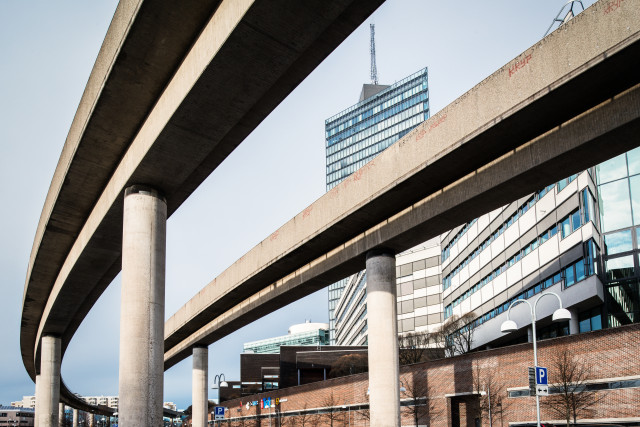- Building materials from different periods
- Diffusion. Vapour permeability. Moisture resistance. Moisture distribution in a multilayered construction under stationary conditions. Saturated vapour content. Condensation
- Capillarity. Capillary hight. Permeability. Capillary resistance
- Convection. Pressure gradient. Air leakage through gaps and porous materials. Amount of condensed moistur.
- Heat demand and energy costs
- Heating systems
- Ventilation
- Humid air and Climatisation
- Air treatment
- Tapwater
- Waste- and rainwater
- Electrical installations
AF1031 Building Technology and Building Services Engineering 7.5 credits

The purpose of the course is to further improve the basic knowledge about building materials and the design and function of buildings and building services engineering given in 1L1026 Buildings and Civil Engineering Structures.
Information per course offering
Course offerings are missing for current or upcoming semesters.
Course syllabus as PDF
Please note: all information from the Course syllabus is available on this page in an accessible format.
Course syllabus AF1031 (Autumn 2007–)Content and learning outcomes
Course contents
Intended learning outcomes
After the course the students should know:
- fundamental building mechanical and building physical terms in the fields deformation, heat and humidity,
- the main processes for moisture transport in building materials and through the envelope of the building and how they may result in unfavourable moisture content leading to damage,
- the basics and specific applications concerning installations for building services, especially heating, ventilation, sanitary and electricity,
- building materials from different periods and basic characteristics of the materials,
- the basics of building acoustics,
- the basics of building fire protection,
- how building technology and building services installations together can realize a healthy and energy efficient house.
Literature and preparations
Specific prerequisites
Buildings and Civil Engineering Structures
Literature
- Burström, PG.: Byggnadsmaterial, Studentlitteratur. In Swedish
- Byggnadsteknikens grunder. Kompendium i byggnadsteknik. Inst för byggnadsteknik. 1994. In Swedish
- Så byggdes husen 1880 - 2000. Arkitektur, material och konstruktion i våra flerbostadshus under 120 år. Formas, Stockholm 2003. In Swedish
- Kompendier i installationsteknik (VVS och el), Avd för installationsteknik. In Swedish
Additional literature will be announced at the beginning of the course.
Examination and completion
Grading scale
Examination
- ÖVN1 - Exercises, 3.0 credits, grading scale: P, F
- TEN1 - Examination, 4.5 credits, grading scale: A, B, C, D, E, FX, F
Based on recommendation from KTH’s coordinator for disabilities, the examiner will decide how to adapt an examination for students with documented disability.
The examiner may apply another examination format when re-examining individual students.
If the course is discontinued, students may request to be examined during the following two academic years.
Other requirements for final grade
Examination (TEN1; 4,5 cr)
Exercises (ÖVN1; 3 cr)
Examiner
Ethical approach
- All members of a group are responsible for the group's work.
- In any assessment, every student shall honestly disclose any help received and sources used.
- In an oral assessment, every student shall be able to present and answer questions about the entire assignment and solution.